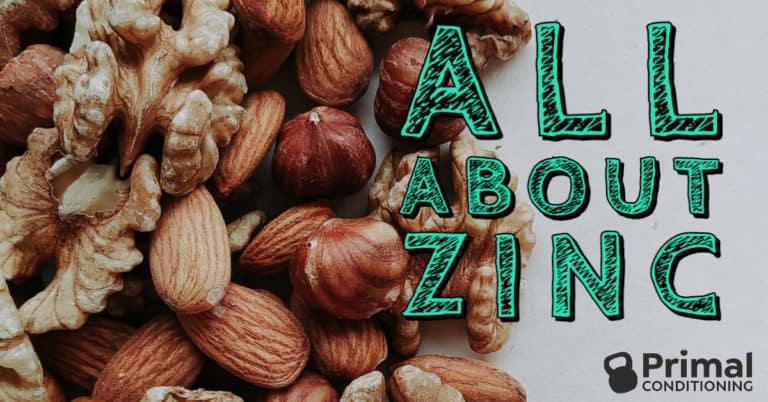- Last Updated: May 18th 2020
Zinc: A vital mineral
Zinc is a trace mineral that our body needs to perform over 300 reactions related to our health, DNA, and metabolism. Zinc benefits everything from childhood growth and development, immune health, skin health, wound healing, muscle cramps, eye health, and more. By regularly eating foods rich in zinc, or by supplementing, you can achieve the benefits of optimal zinc levels. It’s most commonly sold in cold prevention remedies and as a sun blocker. When used along with vitamin C and vitamin D, zinc is a strong player in your “triple threat” supplement strategy for preventing and beating the winter colds and viruses.
How much zinc do you need per day?
And what foods are high in zinc?
Adult males need 11 mg of zinc per day while adult females need 8 mg per day.
In addition to supplementing in the wintertime, most adults could benefit from taking zinc all year, as a stand-alone supplement or in your daily multivitamin. This is because alcohol, poor nutrition, cold weather, inflammation, pollution, and various medications cause the body to use zinc at a faster rate. Vegetarians need as much as 50% more zinc due to the poor absorption of plant-based zinc. The elderly, a high-risk group for zinc deficiency and a high-risk group for winter illness, should be especially aware of their zinc intake.
That assumes you are eating a variety of foods high in zinc to begin with. If you are not regularly eating a well-balanced nutrient-dense diet, one of the best things you can do for your overall health is starting to include more whole foods – including the zinc-rich foods listed below!

Foods high in Zinc
Grass fed meat and shellfish, especially oysters, are the highest sources of zinc. Just one ounce of oysters has 2-3 times your daily supply of zinc! If you are a vegan or eat a minimal amount of animal products, you can easily mix and match legumes, nuts, and seeds to hit your daily target.
Studies
Zinc has been extensively studied for its effects on the immune system, here are some quick facts;
- When administered within 24 hours of the onset of symptoms, zinc reduces the duration and severity of the common cold in healthy people.
- In children, regular zinc supplementation reduces diarrheal episodes, pneumonia, cold, school absenteeism and the use of prescription antibiotics.
- Zinc has been shown to have potential as a stand-alone treatment, or as an adjunct to conventional antidepressant drug therapy for those experiencing mild depression.
- Zinc has been shown to blunt pain receptors responsible for menstrual cramps when taken on the days preceding menstruation.
- Males with low sperm counts were commonly found to be lower in zinc and folic acid.
Absorption
Zinc can be taken with or without food, depending on the quality of zinc and your stomach’s sensitivity. If taking zinc bothers your stomach, you’re probably taking too high of a dose of lesser-quality zinc. Be sure you are taking zinc glycinate or picolinate. If you do not have this type, or cannot find this type of zinc in stores, then try another form of zinc. Do not buy zinc oxide, as this is the least effective form. If your stomach is still bothering you, try taking smaller doses. 30 mg should be the maximum taken at one time. In general, do not take more than 50 mg per day, our body does better with smaller amounts of zinc taken consistently.
If you are supplementing with copper, or take a multivitamin containing copper, do not take this and zinc at the same time of day.
Zinc also should also be spaced at least two hours apart from any tetracycline and penicillamine medications you may be taking.
Sources and more info: NIH Fact Sheet on Zinc
My favorite Zinc supplement is this liquid zinc from amazon. It is easily absorbable and even easier to take. For those who prefer a tablet, this one from Thorne will do the trick!

